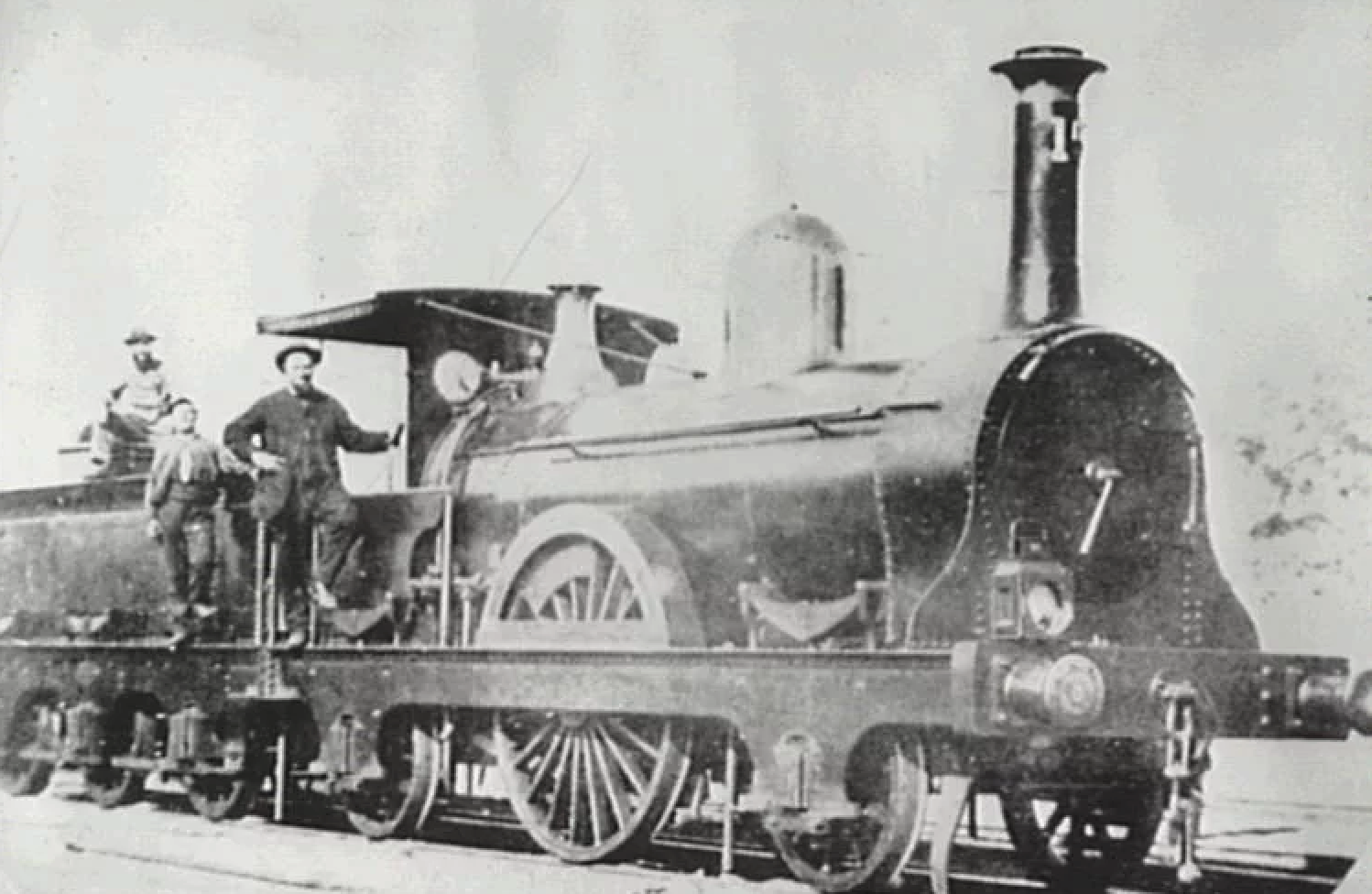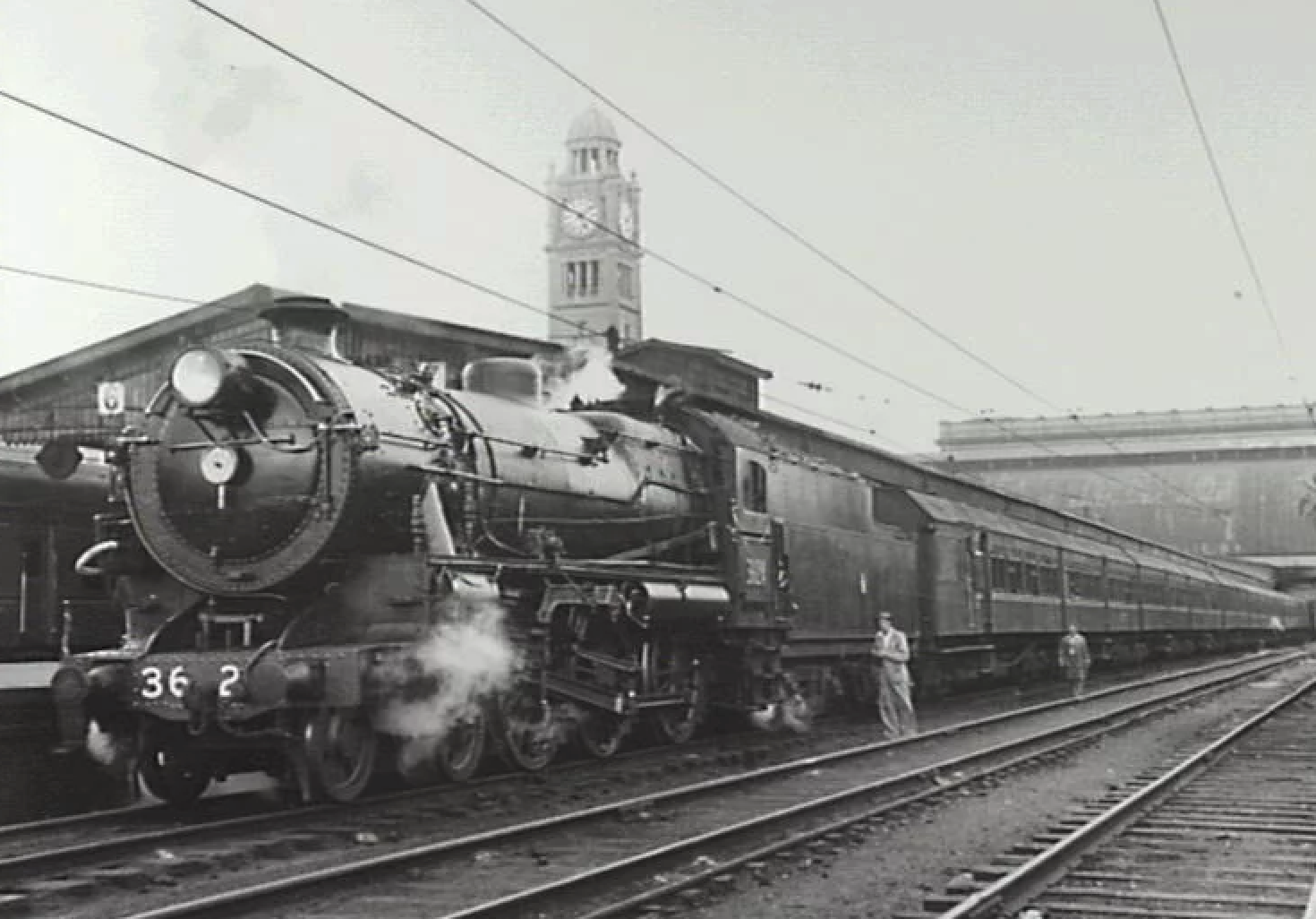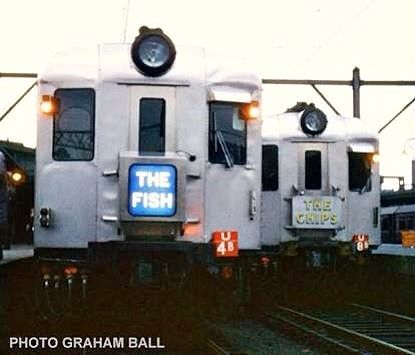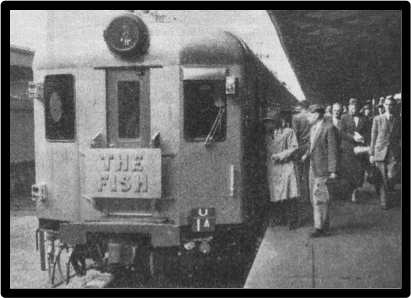The Blue Mountains had 2 trains, one called FISH and the other CHIPS.
The FISH name continued to be used in timetables until it was removed in the 24th July 2004 timetable, but was reinstated with the 4 September 2005 timetable. Sadly, the name disappeared from timetables again in 2014. Running for around 150 years from the 1860s, The Fish was clearly the longest-serving named passenger train in Australia.

The train called the “FISH” was named after John Heron a regular driver of the evening business train to Penrith from 1865 until the 1880s. His regular locomotive on this was No. 15. Heron’s nickname was “The Big Fish” and the train was soon nicknamed “The Fish”. It was officially given this name when Heron retired.
We have found 2 different stories about the FISH.
VERSION 1: The train called the “FISH” was named after John Heron a regular driver of the evening business train to Penrith from 1865 until the 1880s. His regular locomotive on this was No. 15. Heron’s nickname was “The Big Fish” and the train was soon nicknamed “The Fish”. It was officially given this name when Heron retired.
VERSION 2: The ‘Fish’ train was originally so-called because the driver’s name was Mr Salmon; the fireman was Mr Trout and guard Mr Pike. The original Fish ran back around 1900, but the name was transferred to multiple trains including the electric trains of the 1960’s and later.
The CHIPS was first unofficially applied to the second division of The Fish, which didn’t quite work as far. When it was officially adopted in the 1930s. The Fish ran to Mt Victoria and The Chips was the following train which ran to Springwood.
________________________
𝙑𝙄𝘾𝙏𝙊𝙍𝙄𝘼 & 𝘼𝙇𝘽𝙀𝙍𝙏 𝙂𝙐𝙀𝙎𝙏𝙃𝙊𝙐𝙎𝙀 🛌🏻 🍽️
Blend of history and contemporary luxury
4787 1348
www.vaguesthouse.com
___________________ VAH1245

The final steam-hauled run of The Fish from Sydney to Mount Victoria, standing at Sydney Terminal prior to departure with locomotive 3624 at the head of the train, 4 March 1957. Blue Mountains City Council Image Library 000283.
JOHN HERON
The origin of the name The Fish is the subject of folklore but has been traced back to John ‘Jock’ Heron. Heron was born in Dumfries, Scotland, in 1831. He worked on the Glasgow and South Western Railway before migrating to Australia with his younger brother, David.
John was employed as an engineman in June 1861 with the New South Wales Railways. By 1866 he became a driver between Sydney and Penrith, which at this time was the end of the western line, having opened on 19 January 1863.
Engine No. 15, one of three 14 class ((T) 14 class from 1889) 2-2-2 express passenger locomotives, was allocated to Driver John Heron and saw regular service on the Sydney to Penrith line.
At that time it was standard practice for individual locomotives to be assigned to the care and use of particular drivers. No. 15 operated a fast evening commuter service that came to be known as The Fish.
John Heron was a driver who demanded high standards and gained the nickname the ‘big fish’. He was a big man who was known to everyone at Penrith by this name. Heron developed a reputation for keeping a fast schedule and would blow the whistle for the signals approaching Penrith.
This led to the response, “Here comes the big fish!” It is believed that Heron’s name had become corrupted to ‘herring’ and the nickname the ‘big fish’ followed from there. Eventually, the name was transferred from John Heron to the train that he drove. The evening train would stable overnight at Penrith, Heron’s home depot, before returning to Sydney in the morning. John Heron drove the train for over twenty years and was identified strongly with it.
________________________
𝗩𝗜𝗦𝗜𝗧𝗢𝗥 𝗲𝗠𝗔𝗚 📚
No.1 Visitor’s Guide
Find great things to see & do
www.askroz.news/ARBM-Visitor
__________________vic920
Heron drove for 25 years without any kind of accident. He was widely respected by colleagues. By January 1886 Heron had become a locomotive inspector at Penrith depot, and retired in 1890.
After his retirement, Heron lived at North Sydney. He died at his home at McMahon’s Point, North Sydney, on 2 September 1906, aged 75 years. Heron married Isabella Denoon (born Isabella Wallace) in 1857 at the age of 26, but they had no children.
He is buried in the Presbyterian section of Gore Hill Cemetery in the same plot as his wife, who predeceased him. His headstone includes the inscription, ‘LATE OF N.S.W. RAILWAYS.’
MORE info: https://www.railtram.com.au/thefish
________________________
𝙈𝙊𝙐𝙉𝙏𝘼𝙄𝙉𝙎 𝙏𝘼𝙇𝙀𝙎 🤗 𝙒𝘼𝙇𝙆𝙄𝙉𝙂 𝙏𝙊𝙐𝙍𝙎
Katoomba & Leura walking tours
Call: 0410 600 224
www.facebook.com/MountainsTalesNSW
________________mt1235
![]()


